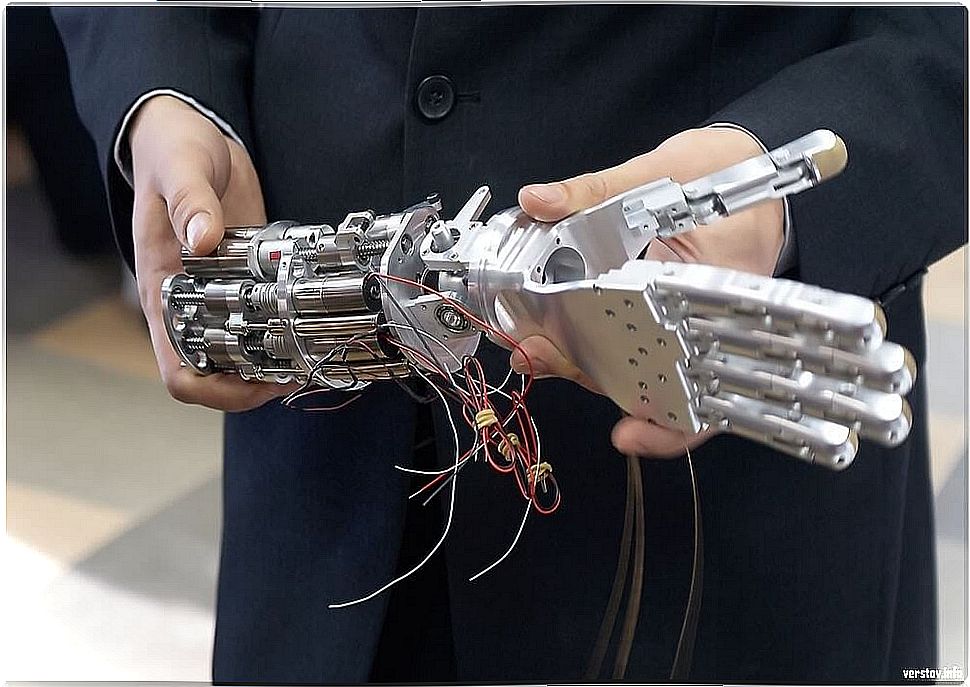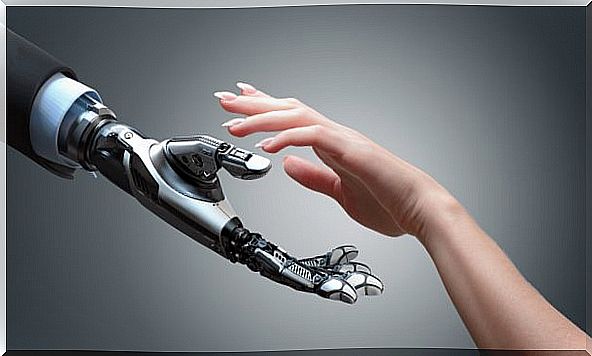A Mind-controlled Robotic Arm That Detects Nerve Signals Is Created
Although there is still more evidence to perfect the technology, this robotic arm could be a great hope for people with amputated limbs, since It could also be applied to other limbs.

Advances in medicine are achieving very important milestones. One of them is robotics. Until very recently, the complexity of a motorized robotic arm is that it could not even do the most basic movements of a real arm.
How to connect the prosthesis to the human body ? That has been the main problem. In a recent study, a team of scientists and surgeons from Imperial College London (UK) has discovered a new form of connection.
The connection of the robotic arm with our body
A majority of robotic arm models use external or implanted sensors. These sensors will connect to the nerves or muscles in the amputated area. What happens when an arm needs to be amputated? That there is damage to most of the nerves and muscles. This will condition and limit the options to find the ideal connection for the artificial limb.

Experts say that the nerve fibers and muscles that run through the arm are also severed. The problem that is generated is where to obtain the necessary nerve signals to connect them to the prosthesis and make it functional.
An important novelty
The team that has carried out the research proposes a new solution: instead of connecting the sensors to the muscles, do it to the nervous system. In this way, it will be possible to integrate the robotic arm, and any other prosthesis, in a more intuitive way, for the patients who receive it.
This advance consists of a chip that will be connected where the motor nerves of the spine remain intact. In the process, the nerve signals will be interpreted through defined parameters and algorithms. These signals will be converted into commands that the robot arm interprets. The best thing is that it is not considered an invasive process.
Successful trials with the robotic arm
This new chip has been successfully tested on different volunteers. As a result, by spending time using the artificial limb, these people have been able to move their arm as well as flex it. In addition, it has been achieved that they move and rotate the elbow, and even that they actuate the wrist by opening and closing the fingers. Quite an achievement.
There is still a long way to go before this robotic arm can be made available in hospitals. However, it is quite possible that in the near future more commands can be programmed into the robotic prosthesis, making it more versatile.

Through this, the user will be provided with greater functionality in his artificial limb. These advances generate illusion and hope. Among other things, because they can also be applied to other members of the body. They are also considered a very important step towards creating robotic limbs that are fully functional.
Test details
During the study, the volunteers underwent a surgical procedure at the Medical University of Vienna in Austria. This surgery was aimed at reorienting parts of your peripheral nervous system (PNS).
- Hand and arm movements were connected to healthy muscles in her body.
- Depending on the type of amputation, the new redirection targeted the pectoral muscle in the chest or the biceps in the arm. .
- This allowed the team to clearly detect the electrical signals sent from spinal motor neurons, in a process the team compared to amplifying the signals.
The new robotic prosthetic arm and its sensor are only experimental prototypes and need to be refined. Although the tests have been fully satisfactory, further studies with more participants are still required to improve the technology. When asked about a time horizon, the study authors affirm that their prosthetic model may be commercialized in the next three years.
Robotics in the human body
As with other fields of science, within robotics there are advances in other areas of the body. Important achievements have been made in the fixed position foot. However, on other issues, research has failed to advance, such as the use of iron in prostheses.
It must be remembered that, since the beginning of time, it has been studied how to implant a prosthesis. This is the case of the old wooden legs. We hope that this robotic arm will become a real hope for many people who have lost their limb.









